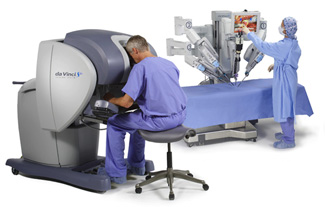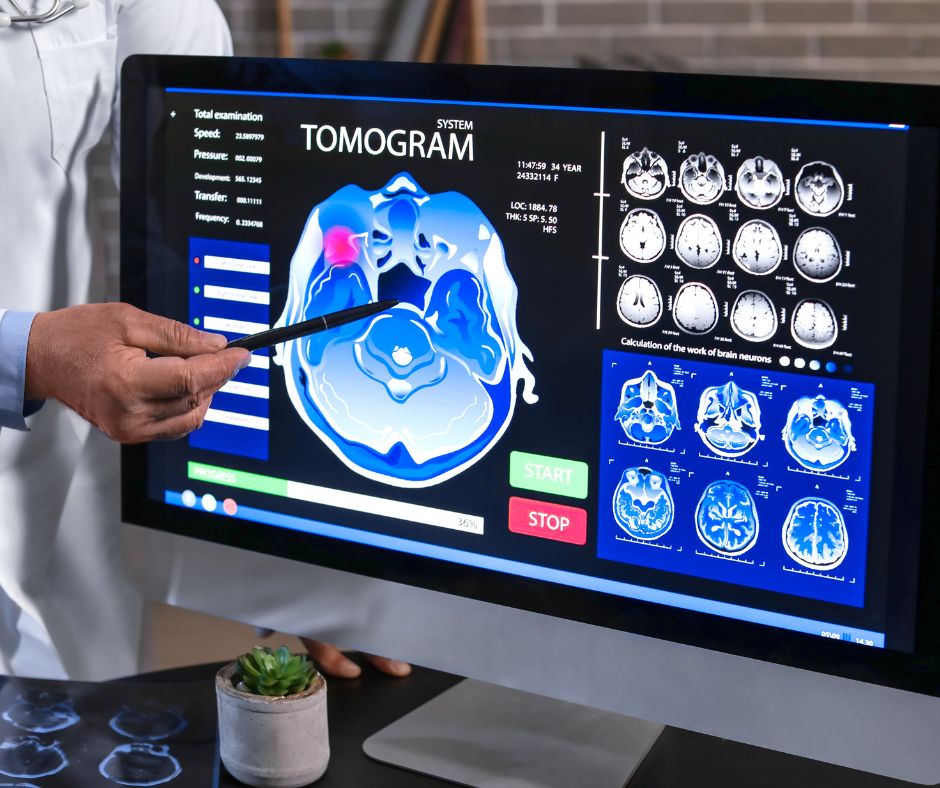In today’s fast-paced world, staying on top of your health can be a challenge. Why not use your smartphone as your personal health assistant? Whether you’re looking to manage a chronic disease or simply keep track of your fitness goals, there’s an artificial intelligence (AI) health app for that.
44% of smartphone users have at least one health app installed (Beckham, 2024) and use it to track and analyze their well-being. Let’s explore the top 10 best AI health apps changing the game in personal wellness management, and how to decide which one’s best for you.
Contents
What Are AI Health Monitoring Apps?

AI health apps are more than just fancy gadgets. They leverage machine learning (ML) algorithms to analyze data from various sources, such as wearable devices, medical history, and biometric data.
Benefits of Using AI for Health-Tracking

Why should you consider using an AI health app? Smartphones and smartwatches can keep track of your health using AI to analyze your health data and monitor everything from your heart rate to your sleep patterns, helping you stay on top of your health. A few more compelling reasons include access to:
- Personalized Health Insights: AI can analyze your unique health data to provide custom advice and recommendations.
- Predictive Health Analysis: By reviewing patterns in your health data, AI can spot potential health issues before they become serious.
- Remote Patient Monitoring (RPM): These apps allow healthcare providers to track their patients health offsite, making healthcare more accessible.
- Convenience: With everything in one app, you can easily track your health metrics, set wellness goals, and receive medication reminders.
An AI health app can track your physical activity, monitor your heart rate, and even analyze your sleep patterns. This info can help you understand your overall health better and make informed decisions.
With so many options available, it’s important to know what features make a great AI health app.
What to Look for in Health Apps

When choosing an AI health app, it’s essential to know what features to look for. Here are some must-have features:
- Activity Tracking: Monitor your daily physical activity, including steps taken, calories burned, and workout intensity.
- Heart Rate Monitoring: Keep track of your heart rate during different activities and rest periods.
- Sleep Tracking: Analyze your sleep patterns to improve your sleep quality.
- Nutrition Tracking: Log your meals and monitor your calorie intake.
- Symptom Checker: Identify potential health issues based on your symptoms.
- Medication Reminders: Get reminders to take your medications on time.
- Data Privacy: Ensure your health data is secure and private.
- User-Friendly Interface: Easy to navigate and use, even for non-tech-savvy users.
These features can help you manage your health more effectively and make the app a valuable tool in your daily life.
Now that we know what to look for, let’s explore some of the top AI health apps on the market.
Our Picks: The 10 Best AI Health Apps
1. MyFitnessPal

MyFitnessPal, developed by Under Armour, is a health app that focuses on nutrition and fitness tracking. It helps users log their meals, track their calorie intake, and monitor their physical activity.
Key Features:
- Calorie counter
- Nutrition tracking
- Exercise tracking
- Integration with other fitness apps and devices
| Pros | Cons |
| Extensive food database | Ads in the free version |
| User-friendly interface | Some features require a premium subscription |
Use Case
Ideal for individuals looking to manage their diet and fitness goals.
2. Fitbit

Fitbit, now owned by Google, is a well-known name in the fitness tracking industry. The app works with Fitbit wearable devices to monitor various health metrics.
Key Features:
- Activity tracking
- Heart rate monitoring
- Sleep analysis
- Personalized health insights
| Pros | Cons |
| Comprehensive health-tracking | Requires a Fitbit device |
| User-friendly interface | Some features require a premium subscription |
Use Case
Suitable for fitness enthusiasts who want a detailed analysis of their health metrics.
3. Headspace

Headspace is a mental health app that focuses on meditation and mindfulness. It helps users manage stress, improve sleep, and enhance overall well-being.
Key Features:
- Guided meditation sessions
- Sleep sounds and bedtime stories
- Stress management tools
- Personalized recommendations
| Pros | Cons |
| High-quality content | Subscription required for full access |
| User-friendly interface | Limited free content |
Use Case
Great for individuals looking to improve their mental health and reduce stress.
4. Apple Health

Apple Health is a built-in app for iOS devices that consolidates health data from various sources. It provides a deep overview of your health metrics.
Key Features:
- Activity and exercise tracking
- Heart rate monitoring
- Sleep analysis
- Integration with third-party apps
| Pros | Cons |
| Integrates with multiple devices | Only available on iOS |
| Comprehensive health data | Limited customization options |
Use Case
Perfect for iPhone users who want a centralized health-tracking solution.
5. Samsung Health

Samsung Health is a versatile health app available for Android and iOS devices. It tracks various health metrics and offers personalized health insights.
Key Features:
- Activity tracking
- Heart rate monitoring
- Sleep analysis
- Stress management tools
| Pros | Cons |
| Wide range of features | Some features require Samsung devices |
| User-friendly interface | Ads in the free version |
Use Case
Ideal for Samsung device users looking for a detailed health-tracking app.
6. Garmin Connect
Garmin Connect works with Garmin wearable devices to provide detailed health and fitness tracking. It shows data about your physical activity, sleep, and more.
Key Features:
- Activity tracking
- Heart rate monitoring
- Sleep analysis
- Workout planner
| Pros | Cons |
| Detailed health insights | Requires a Garmin device |
| Customizable | Some features are complex |
Use Case
Best for athletes and fitness enthusiasts using Garmin devices.
7. Oura

Oura is the health app that comes with the Oura Ring to track various health metrics, including sleep, activity, and readiness.
Key Features:
- Sleep tracking
- Activity tracking
- Readiness score
- Personalized insights
| Pros | Cons |
| Accurate sleep tracking | Expensive |
| Comprehensive health data | Requires the Oura Ring |
Use Case
Suitable for individuals focused on improving their sleep and overall health.
8. Google Fit

Google Fit is a health app developed by Google that tracks your physical activity and provides personalized health insights.
Key Features:
- Activity tracking
- Heart rate monitoring
- Integration with other fitness apps
- Personalized goals
| Pros | Cons |
| Free to use | Limited advanced features |
| Works with multiple devices | Basic interface |
Use Case
Ideal for Android users looking for a free health-tracking solution.
9. Noom

Noom is a health app that focuses on weight loss and healthy living through behavioral science. It offers personalized coaching and meal tracking.
Key Features:
- Calorie counter
- Nutrition tracking
- Personalized coaching
- Behavioral insights
| Pros | Cons |
| Personalized approach | Subscription required |
| Effective weight loss program | Time-consuming |
Use Case
Great for individuals looking to lose weight and adopt healthier habits.
10. Flo

Flo is an app designed for women’s health. It tracks menstrual cycles and ovulation, and offers personalized health insights.
Key Features:
- Menstrual cycle tracking
- Ovulation prediction
- Health insights
- Symptom checker
| Pros | Cons |
| Comprehensive women’s health-tracking | Some features require a subscription |
| User-friendly interface | Ads in the free version |
Use Case
Ideal for women looking to track their menstrual health and fertility.
With all these great options, how do you pick the right one for you? Next we’ll look at some tips to help you decide.
How to Choose the Right App for Your Needs

Choosing the right AI health app can be overwhelming with so many options available. Here are some tips to help you make the right choice:
- Determine Your Needs: Determine what health metrics you want to track and what features are most important to you.
- Check Compatibility: Ensure the app is compatible with your devices and other health apps you use.
- Read Reviews: Look for user reviews and ratings to get an idea of the app’s performance and reliability.
- Consider Privacy: Make sure the app has robust privacy and security measures to protect your data.
- Try Free Versions: Many apps offer free versions or trials. Test them out before committing to a subscription.
By considering these factors, you can find an app that meets your health-tracking needs and fits seamlessly into your lifestyle.
While these apps can be incredibly helpful, it’s crucial to consider how they handle your personal information.
Privacy and Security Considerations

When it comes to health apps, privacy and security are paramount. Here are some key considerations (ERTech, 2023):
- Data Encryption: Ensure the app uses encryption to protect your data during transmission and storage.
- Secure Authentication: Look for apps that offer multi-factor authentication to verify your identity.
- Clear Privacy Policies: The app should have a transparent privacy policy that is easy to understand.
- Data Sharing: Be cautious of apps that share your data with third parties, especially for advertising purposes.
A study in the British Medical Journal found that many health apps have serious privacy issues, including a lack of transparency in their privacy policies (Grundy et al., 2019). It’s crucial to choose apps that prioritize your data privacy and security.
As exciting as current AI health apps are, the future holds even more promise. Let’s take a look at what’s coming.
The Future of AI in Health Monitoring

The future of AI in health monitoring looks promising. Here are some trends to watch:
- Advanced Predictive Analysis: AI will become better at predicting health issues before they occur, leading to more proactive healthcare.
- Integration with Telemedicine: AI health apps will work more seamlessly with telemedicine services, providing a well-rounded healthcare solution.
- Personalized Healthcare: AI will continue to offer more personal tips tailored to individual needs and preferences.
- Improved Data Privacy: As privacy concerns grow, AI health apps will adopt more advanced privacy-preserving techniques, such as federated learning and differential privacy (Yadav et al., 2023).
Conclusion
AI health monitoring apps are powerful tools that put wellness management at your fingertips. From tracking your sleep patterns to monitoring your heart rate, these smart applications offer personalized insights to help you make informed decisions about your health.
Remember, while these apps are incredibly useful, they’re not a replacement for professional medical advice. Use them as a complement to regular check-ups and always consult with your healthcare provider for serious concerns. By choosing the right app and prioritizing privacy and security, you can take control of your health and well-being.
References
Beckman, J. (2024). 30 Amazing Mobile Health Technology Statistics. Tech Report. Retrieved from https://techreport.com/statistics/software-web/mobile-healthcare-technology-statistics/
Best Practices for Healthcare Privacy in Mobile Apps. ERTech. Retrieved from https://www.ertech.io/blog/best-practices-for-healthcare-privacy-in-mobile-apps
Grundy, Q., Chiu, K., Held, F., Continella, A., Bero, L., & Holz, R. (2019). Data sharing practices of medicines related apps and the mobile ecosystem: Traffic, content, and network analysis. BMJ, 364, l920. doi.org/10.1136/bmj.l920
Yadav, N., Pandey, S., Gupta, A., Dudani, P., Gupta, S., & Rangarajan, K. Data Privacy in Healthcare: In the Era of Artificial Intelligence. Indian Dermatology Online Journal, 14(6), 788-792. doi.org/10.4103/idoj.idoj_543_23

















































































